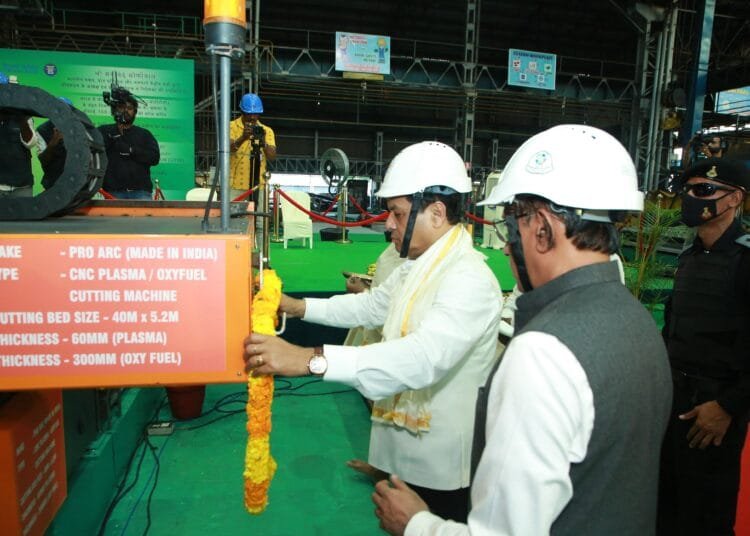1047.57 MT coal produced in FY 2024-25, says Ministry
India has introduced Blast-free mining technologies, such as Continuous Miner, Powered Support Longwall (PSLW) in Under Ground (UG) mines, Surface Miner, Eccentric/Vertical Ripper in Opencast (OC) mines and Hybrid High Wall mining to extract coal seams that are not techno-economically viable through traditional opencast mining method.
Real-time monitoring of UG mine environment by Environmental Telemonitoring System (ETMS) and Gas Chromatographs are used for quick and accurate mine air sampling, the Ministry of Coal said on 4 April in an industry update.
Mechanised roof bolting arrangement i.e. Universal Drilling Machine (UDM), QUAD and Twin Bolter systems, along with resin capsules and advanced instrumentation for strata monitoring.
Dust suppression systems like truck-mounted Fog Canons and Sprinkler cum-mist sprays to reduce dust https://www.iea.org/.
Simulator-based training for Heavy Earth Moving Machinery (HEMM) operators and Virtual Reality (VR) training programs.
Modern technologies like Total Stations, 3D Terrestrial Laser Scanning (TLS), and Slope Stability Radars for monitoring slope and overburden (OB) dump stability. GPS-based Operator Independent Truck Dispatch System (OITDS), Geo-fencing in large OC to track HEMM movements .
The coal sector’s continued growth and resilience are vital to India’s energy strategy, economic development, and long-term sustainability. The remarkable achievements in production, dispatch, and coal gasification initiatives highlight the sector’s evolving role in meeting the nation’s energy demands, it said.
Through constant advancements in safety, environmental protection, and workforce welfare, the coal industry is setting a strong foundation for future progress, it added.
Meanwhile, India’s coal production has reached 1047.57 MT (Provisional) in FY 2024-25, compared to 997.83 MT in FY 2023-24, marking a 4.99% growth, the Ministry said https://www.opec.org/.
Production from Commercial & Captive, and other entities also saw a remarkable surge, reaching 197.50 MT (Provisional)—a 28.11% increase from 154.16 MT recorded in the previous year.
Coal dispatch has also crossed the One Billion Tonne milestone, with total dispatch reaching 1024.99 MT (Provisional) in FY 2024-25, up 5.34% from 973.01 MT in FY 2023-24. Dispatch from Commercial, Captive, and other entities witnessed an even more significant rise, reaching 196.83 MT (Provisional)—a 31.39% increase compared to 149.81 MT in the previous year.
Coal imports fell 8.4% to 183.42 MT in April-December 2024 from 200.19 MT in the same period of FY 2023-24, saving US$5.43 billion (Rs.42,315.7 crore) in foreign exchange. The Non-Regulated Sector saw a sharper decline of 12.01%, while imports for blending by thermal power plants dropped 29.8%, despite a 3.53% rise in coal-based power generation.
Coal remains crucial for power, steel, and cement industries, but shortages in coking and high-grade thermal coal make imports necessary http://worldcoal.org.
The Ministry said it is strengthening domestic production to enhance energy security and advance Viksit Bharat, ensuring a self-reliant, sustainable energy framework for long-term growth.
Coal is vital to India’s energy needs, supplying over half of the country’s power. Despite renewable energy growth, coal-based thermal power will remain essential, with its share projected at 55% by 2030 and 27% by 2047.
Railways & revenue: Coal stands as the single largest contributor to railway freight, with an average share of nearly 49% of total freight income amounting to Rs.82,275 crore in the fiscal year 2022-23 alone. This revenue contribution has surpassed 33% of total railway earnings, showcasing the sector’s substantial influence on India’s transportation network.
Government earnings: The coal sector contributes over Rs.70,000 crore annually to the central and state governments through royalties, GST, and other levies. These funds play a crucial role in fostering socio-economic development and infrastructure enhancement in coal-producing regions. Coal production generates substantial revenue for both Central and State Governments, with royalty collections reaching Rs.23,184.86 crore in the fiscal year 2022-23 .
Economic growth: Substantial investments in capital expenditure, averaging Rs.18,255 crore annually over the past five years, have facilitated infrastructure development and resource optimization within coal sector PSUs.
The Government has undertaken the following coal gasification initiatives:
Financial incentive: On 24 Jan 2024, the Government approved Rs.8,500 crore for promoting coal/lignite gasification projects for PSUs and the private sector.
Investment by CIL: Coal India Limited (CIL) has been approved to invest in joint ventures with BHEL and GAIL for coal gasification projects.
New sub-sector: In 2022, “Production of Syngas leading to coal gasification” was added under the NRS linkage auctions policy. Auctions under this sector have a floor price at the regulated sector’s notified price for projects commissioning within next seven years.
Revenue share rebate: A 50% rebate in revenue share for coal used in gasification has been introduced in commercial coal block auctions, provided at least 10% of the total coal production is used for gasification.
Coal gasification converts coal into syngas, which can be used for producing methanol, ammonium nitrate, Synthetic Natural Gas (SNG), and fertilisers. This technology promotes environmental sustainability in line with the vision of a developed India by 2047. Fiinews.com









